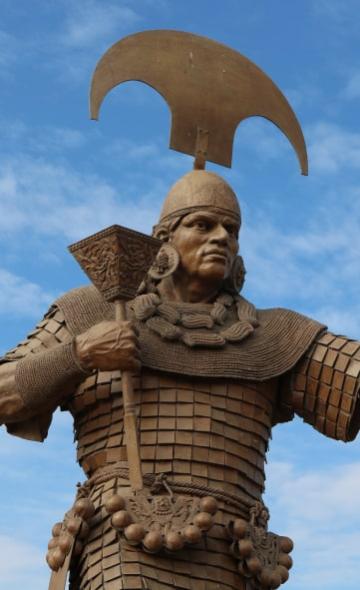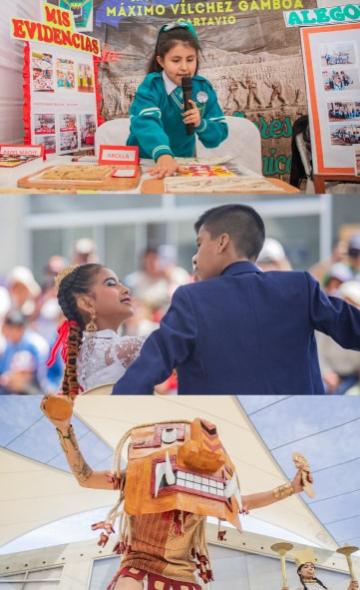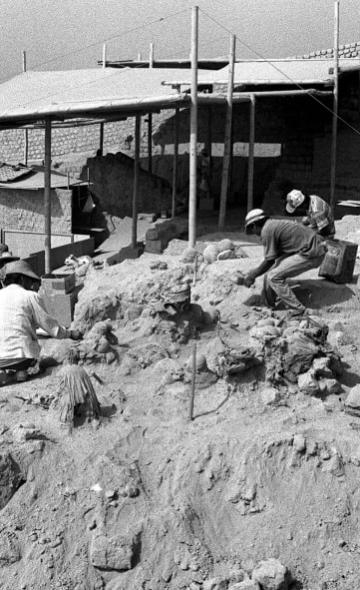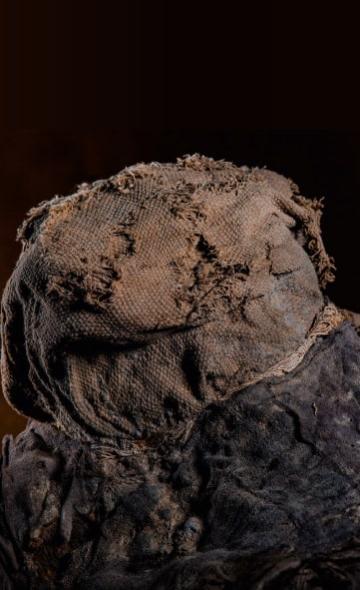- Visitors
- Researchers
- Students
- Community
- Information for the tourist
- Hours and fees
- How to get?
- Virtual tours
- Classic route
- Mystical route
- Specialized route
- Site museum
- Know the town
- Cultural Spaces
- Cao Museum
- Huaca Cao Viejo
- Huaca Prieta
- Huaca Cortada
- Ceremonial Well
- Walls
- Play at home
- Puzzle
- Trivia
- Memorize
- Crosswords
- Alphabet soup
- Crafts
- Pac-Man Moche
- Workshops and Inventory
- Micro-workshops
- Collections inventory
- News
- Students
- Lord of Sipán: Who was he and what culture did he belong to?
News
CategoriesSelect the category you want to see:
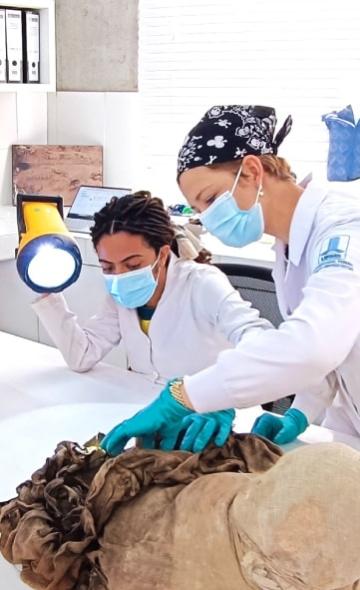
International academic cooperation between the Wiese Foundation and Universidad Federal de Mato Grosso do Sul ...
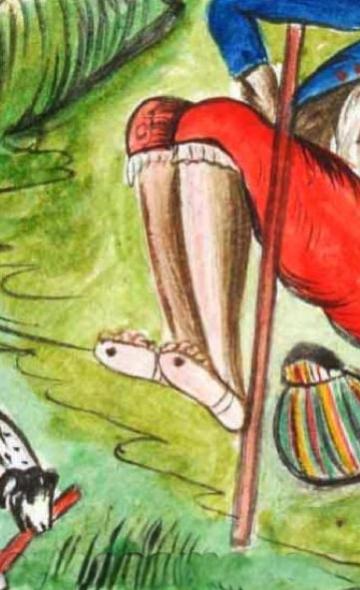
Clothing at El Brujo: footwear ...
To receive new news.
Por: Complejo Arqueológico El Brujo
Tomb 1, found in Huaca Rajada, in the Lambayeque region of Peru, was discovered by Peruvian archaeologist Walter Alva and his team. It is considered to be one of the most important and rich tombs discovered in South America, as it contained the remains of a high-ranking personage of the Mochica civilization, accompanied by numerous valuables and ritual offerings. The discovery of the Lord of Sipán shed light on the Mochica culture and provided a unique insight into the life and funerary practices of this pre-Hispanic society.
In this post, we tell you more about the Lord of Sipán and the culture to which he belonged.
Who was the Lord of Sipán and what culture did he belong to?
According to the finds obtained in tomb 1, the personage, later known as the Lord of Sipán, would have held a position of power in Mochica society. The osteological studies carried out on the body indicated that he would have died at approximately 40 years of age.
Moreover, the funerary context revealed that this ruler was buried with a wide range of objects and offerings of high quality and symbolism.
Also, the layout and richness of the tomb, together with the presence of additional burials around its main figure, suggest that the Lord of Sipán was both a figure of power and a leader revered by his community. Being accompanied on his journey to the afterlife by other adult individuals, possibly warriors and priests, reinforces the idea of his prominent position in the social and religious hierarchy of the Mochica culture.
Discover the figures of the Mochica elite
The discovery of the Lady of Cao in 2005 represents another significant milestone in our understanding of the Mochica culture. Like the Lord of Sipán, she held a position of prominence within the Mochica elite, as revealed by the context of her tomb and the objects found next to her body.
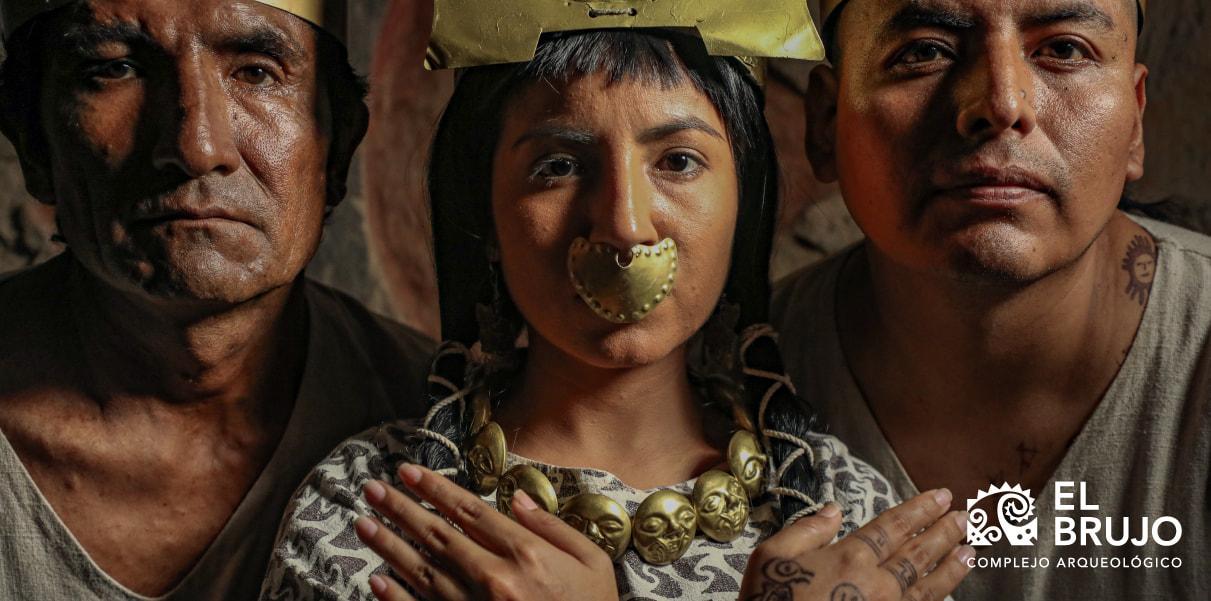
The Lady of Cao was buried with a rich set of offerings and artifacts of high symbolic value. Her funerary bundle, composed of 22 layers, reveals the importance and care with which her burial was prepared, suggesting her privileged status in Mochica society. Moreover, the similarity of the emblems of power found next to the Lady of Cao with those of the personage that we see in the "Sacrifice Ceremony" in Mochica iconography suggests her semi-divine investiture and political-religious authority, much like that of the Lord of Sipán. This supports the idea that the Lady of Cao also played a crucial role in the ritual and religious practices of her cultural group.
Undoubtedly, the legacy left by the Lord of Sipán and the Lady of Cao goes beyond their role as figures of power in the Mochica culture. Their finding has uncovered a unique window into a fascinating pre-Hispanic society, offering valuable insights into their social structures, as well as religious and ceremonial practices.
For those interested in further exploring this captivating history, the archaeological sites of Sipán and El Brujo provide an incomparable opportunity to immerse oneself in the past and discover the greatness of a civilization that still has much to tell us through the archaeological investigations that continue to be conducted in both enclosures. Visit them!
You can also read:
• Face of the Lady of Cao: Learn all the details about its reconstruction
• Open Museums: Find out which ones you can visit FREE of charge
• El Brujo Site Museum: An invaluable educational resource about pre-Hispanic civilizations
Students , outstanding news


